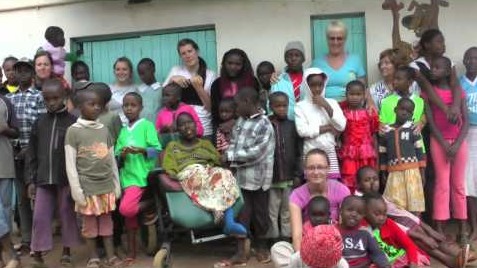Land ownership has been a hot topic for millennia. When the US was first created, Thomas Jefferson heavily contemplated how to legally deal with land ownership going back and forth on whether or not the Declaration of Independence should give people rights to the land. The first draft of the preamble to the Declaration of Independence stated that every man has the right to “life, liberty, and property” but not wanting to be held to such a high standard, and guarantee every citizen in the US land, he changed it from stating property to “the pursuit of happiness.”
Here in Kenya land ownership is a completely different beast. Unlike the US, where land is privately owned and taxed by the government, land in Kenya is predominantly government owned and controlled. Although this system has its benefits, especially when it comes to protecting the pastoral communities, such as the Maasai and Samburu, government control does have its downsides.
This summer, when allocating funds to build a home for a needy family, the PA-MOJA team were enlightened about the downsides of government owned and controlled land. In mid July PA-MOJA, in conjunction with Ol Pejeta Conservancy, met with local community leaders from the Northern areas of the park to discuss which family to assist. After a long and thorough discussion the community leaders decided that PA-MOJA funds should go to help build a home and support the education of a family in the Depatas community.

For the average North American this task would require building permits, many 2x4s, installation, dry wall, skilled plumbers and electricians. However, this building project in Depatas requires something very different and comes with a plethora of other challenges. While North Americans fight with local leaders in order to get building permits, Kenyans, who are living on government land, have to worry about eviction at any time, no matter how big, small, or sturdy their house is.
So when the question of what supplies were needed came up the response was simple: corrugated tin for the roof, sticks for the frame, and nails to hold it all together. A rather basic request until you learn that people living on government land can be asked to move at any time and so a more permanent home made from cinder blocks and cement would not be economically wise and transportable.
The stresses that come with land here in Kenya are ones that are one that Westerners are not accustomed to. The pastoral communities of North America were pushed onto reservations decades ago due to the governments strong beliefs in and protection of private ownership. Since 1963, when Kenya received its independence from the United Kingdom, land ownership has been a source of much political debate. The Maasai, Samburu, and Turkana have been fighting the Kenyan government for decades for more protection of the communal lands. However, with the movement towards more private ownership and wildlife conservation, these communities have watched the lands that they have been walking and grazing on for centuries disappear.
Although the issues that surround land ownership will not be solved in the near future, the PA-MOJA team is happy that their community outreach programs are at least minimizing the strains that these local communities face. By providing a home, even if its made out of sticks and mud, the PA-MOJA team is helping to mend some of the tensions and keep the spirit of conservation alive in and around the Ol Pejeta Conservancy.
By Leigh Vierstra


This is a really informative article. Thanks Leigh